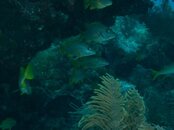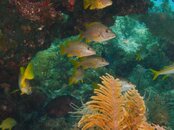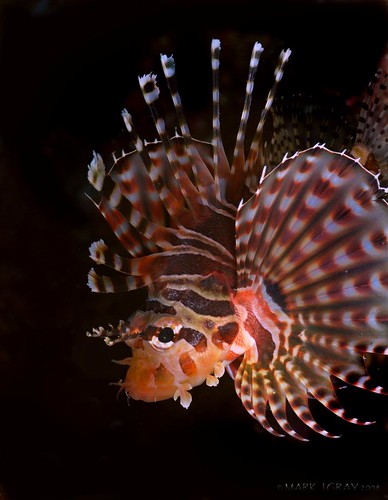Puffer fish, how are you making these adjustments afterwards?
Hi Gungagallunga.
I'm impressed that you would take the time to read this terrible thread.
First off, you need a camera that shoots in raw (where there is a lot more data available than you can see).
Second, you need raw processing software. Surprisingly, some do more adjustment that others... for example, Lightroom is about the least and After shot is about the most. Not sure why that is, as you would think they were all working with the same information.
Third, doing an auto white balance adjustment (actually a grey scale adjustment) can make a larger adjustment than you can do, if you do it manually (again, not sure why that is).
Fourth, You then can make minor adjustments to correct (as the images picked need to have done) any off shade problems from not having a true grey to do the color balance one.
Have to change computers to get images to show, so will be in another post.
PS Some camera's that shoot raw come with fairly good software...Canon's is not bad, Panasonic and Fuji both use the same software, and while not the easiest to understand, works very well. Olympus sucks and one should get better software. Don't know the Nikon stuff.
---------- Post Merged at 07:51 PM ---------- Previous Post was at 07:06 PM ----------
Warren, Let me give you an example. A several years ago, as my wife's birthday present, I got her a Canon 50D and several L lenses. She wanted to learn as much as she could about photography, so she joined a Canon Forum and would post images, discuss technic's and talk about what was good and bad. About a year into the forum, one of her images brought out a discussion regarding how great DSLR's were over all other digital camera's. Lovely Bokeh, controlled depth of field...etc, etc.
So she asked me why only a Dslr could do that, and I explained to her that these are just tools, and if you care more about the technology, you are missing the whole point of photography. So I went out, took an image, stripped of all the camera info and gave it to her to post. Just under 100 people made glowing comments about this lovely Dslr image.....and then she told them it was not taken with a Dslr.. and she got banned.
Minor taught us that by shooting one day with a brownie box camera and took better images than I have ever seen (or personally taken). If you care about the technic, the method, the tools, then you don't care about the object.
In the older days, if you shot with a slr, you were not really a photographer (in an art sense)..because real photographers (except for New York studio people) use large format cameras. Today, we have that same snobbery, only it has switched to DSLR's.
When you look at "art"...if you see the technic, think about the method, consider the tools, then it may be a lovely image, it may be something you really like, but it stopped being art this instant you switched your thinking from looking at the image to thinking about how it was made. As the image's message just became one of what tools were used...
In painting, for example, it would be the same as thinking about the type of pigments, the specific brushes used and how they were applied when you look at say the Mona Lisa. Even more so, if you were to judge the final image based whether or not the specific tools used were ones you have decided at the only ones that can make "art".
Hi Puffer, I'm a bit confused by your comments regarding what one considers to be art. As you allude to, what is art is a personal point of view. What you or I would consider to be art may very well be different than what someone else believes. What I'm not clear about is that (based on your comments about a photographer talking about the techniques or methods he or she may employ in taking a photo) one's photo is not art when the photographer talks about how the shot was taken? Given this position, I would have thought what is art and what isn't wouldn't be something that could be defined in such a manner.
---------- Post Merged on July 3rd, 2012 at 06:27 PM ---------- Previous Post was on July 2nd, 2012 at 07:06 PM ----------
Found one to adjust:


There, a before and after shot, done with software.










